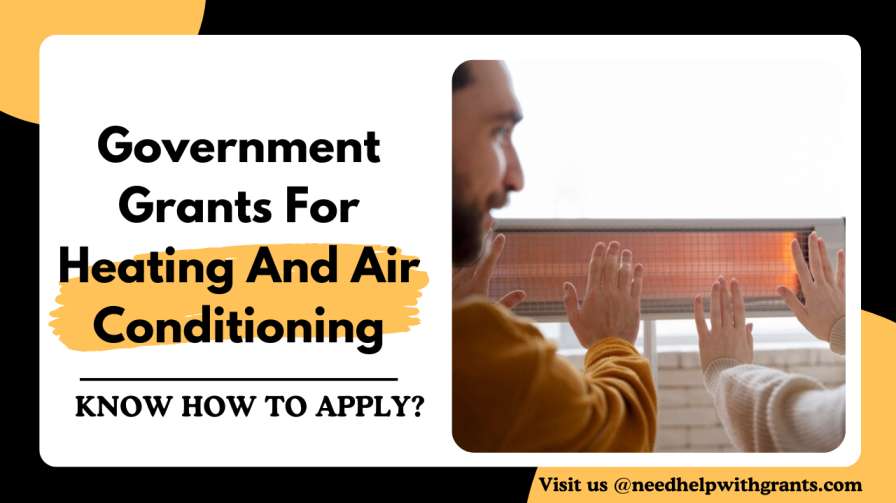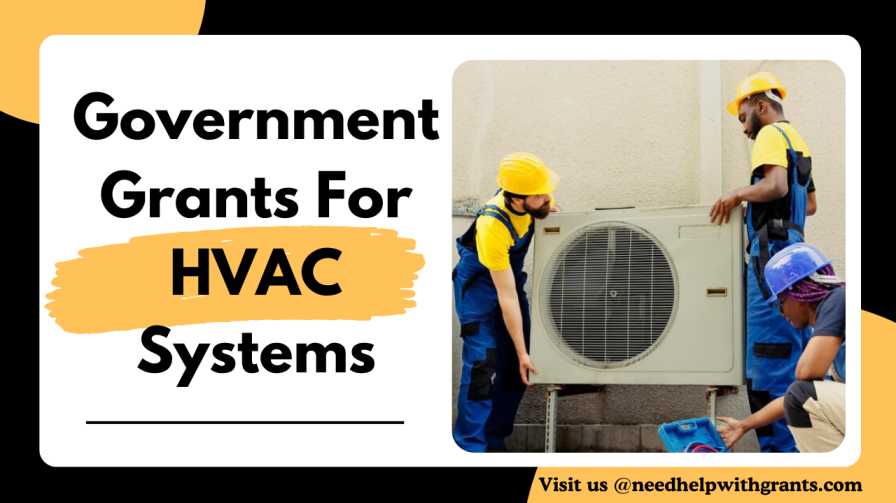I know that keeping my home comfortable all year round is essential. In the summer, my family and I rely on air conditioning to keep us cool. In winter, heating keeps us warm. However, these systems can be expensive for me to install and maintain.
Fortunately, I discovered that the government offers grants to help people afford these necessary upgrades. Today in this article I will discuss what these grants are, who can get them, and how they work.
Summary:
Grants, rebates, and tax credits are available to ease the financial burden of heating and air conditioning.
Most programs prioritize low-income families and individuals.
Subsidy programs may be aimed at seniors, disabled people, or people with high energy bills.
Eligibility and program details vary by state and locality.
Types of Government Grants for Heating and Air Conditioning
Here I have listed 8 types of Government grants that ill help you with heating and air conditioning.
1. Weatherization Assistance Program (WAP)
The Weatherization Assistance Program (WAP) helps low-income households reduce energy costs by increasing energy efficiency in their homes. This could include upgrading heating and cooling systems, adding insulation, and other energy-saving measures.
Eligibility:
- Households with incomes at or below 200% of the federal poverty level.
- Priority is generally given to the elderly, disabled, and families with children.
- Appropriateness may vary slightly from country to country.
Application Procedure:
- Contact your state or local weatherization service.
- Complete the application form and provide necessary documents such as proof of income.
- A home energy audit is often conducted to identify necessary improvements.
For more, visit the Department of Energy website.
2. Low-Income Home Energy Assistance Program (LIHEAP)
LIHEAP helps low-income families with heating and cooling energy costs, including rebate assistance, assistance with energy problems, and minor home repairs related to weatherization and energy
Eligibility:
- Households with incomes below 150% of the federal poverty level or 60% of the federal median income.
- Priority is generally given to the elderly, disabled, and families with young children.
- Eligibility requirements may vary from state to state.
Application Procedure:
- Apply through your state or local LIHEAP office.
- Provide documentation of household income and size, as well as recent energy bills.
- Some states may have online application options.
To learn more I suggest visiting the website (https://www.acf.hhs.gov/ocs/programs/liheap).
3. Energy Efficient Home Improvement Credit (Federal Tax Credit)
The Federal tax credits for homeowners who make energy-efficient improvements to their homes, such as upgrading HVAC systems, adding insulation, and energy-efficient windows and doors more installation is available
Eligibility:
- Available to homeowners who are making quality energy-efficient developments.
- They must meet specific energy efficiency standards set by the IRS.
Application Procedure:
Keep receipts and manufacturer’s certificate.
Credit the money when filing your federal tax return with IRS Form 5695.
4. State and Local Rebate Programs
- Many state and local companies offer coverage for energy-efficient home improvements, including HVAC installation. These policies vary greatly from place to place.
Eligibility:
- It varies from country to country and from utility to company.
- It is generally available to homeowners who install appropriate energy-efficient appliances.
Application Procedure:
- Check with your state energy agency or local energy agency or available programs.
- Follow specific instructions for use, which usually include proof of purchase and installation of containers.
5. Rural Energy for America Program (REAP)
REAP also provides grants and loans to agricultural and rural small businesses for renewable energy systems and energy efficiency improvements, including HVAC upgrades.
Eligibility:
- Agricultural products that derive at least 50% of their total income from agricultural activity.
- Small businesses in convenient rural areas.
Application Procedure:
- Apply to the USDA Rural Development Office, or visit the website.
- Provide detailed project information including energy savings estimates and financial statements.
- Applications are generally accepted on an ongoing basis with periodic grace periods.
6. Nonprofit and Community Organization Grants
Nonprofit organizations and community practices are providing grants and support to improve energy efficiency, targeting low-income households and underserved communities
Eligibility:
- Organizations vary but tend to focus on low-income, senior citizens, or individuals with disabilities.
- Some programs may target specific communities or locations.
Application Procedure:
- Contact local nonprofits or local action agencies for available programs.
- Complete the required application forms and submit the required documents.
7. Energy Star Rebates and Incentives
Through the Energy Star program, a variety of discounts and incentives are available for purchasing Energy Star-certified HVAC systems.
Eligibility Criteria:
- Appropriate Energy Star-certified products must be purchased and installed.
- Rebates and incentives vary by country and utility.
- Proof of purchase and installation is usually required.
To learn more, visit their website (https://www.energystar.gov/rebate-finder).
8. Veterans Affairs (VA) Specially Altered Housing (SAH) Assistance
SAH grants help service-disabled veterans customize their homes, including upgraded HVAC systems for accessibility and comfort. To know more visit the VA website.
Eligibility Criteria:
- Must be a veteran with a specific service-related disability.
- Adjustments may be needed at home to accommodate the veteran’s disability.
- The home adaptation must be owned or attended by a veteran.
Eligibility Requirements to Get Heating and Air Conditioning (HVAC) Grants from Government
Everyone may not receive such assistance from government grants. you need to be eligible to receive these grants. Here I have listed the basic eligibility requirements that you have to meet to get heating and air conditioning.
Income Level:
Many HVAC assistance programs target low-income families. Eligibility is generally based on income, typically defined as a percentage of the state poverty level or a percentage of state income.
Revenues may vary depending on the program and location. For example, some programs may impose an income limit of 150% of the national poverty level, while others may use 200% or some other limit.
Accommodation:
Generally, applicants must be residents of the state, state, or locality that offers the grant program.
Some programs may have additional residency requirements, such as residency in a specific area served by the assistance program.
Home ownerships:
Some HVAC assistance programs may require applicants to obtain ownership of the home where the HVAC system will be installed.
Tenants may also qualify for certain programs but may need the landlord’s permission or participate in the application process.
Planning Requirements:
Grants are often provided to install or upgrade energy-efficient HVAC systems.
Applicants may be required to install systems that meet specific energy efficiency standards or be certified by recognized organizations such as Energy Star.
Priority Populations:
Some HVAC grant programs prioritize certain populations, such as:
- Low-income households.
- Elderly individuals.
- People with disabilities.
- Families with children.
- Veterans.
Compliance with Program Guidelines:
Applicants must comply with all rules and guidelines issued by the grant program.
This can include accurately completing applications, submitting required documentation, and meeting deadlines.
Other references:
- Depending on the plan, there may be additional eligibility factors related to factors such as energy consumption, household size, or the age of existing HVAC systems
- Some assistance programs may require clients to demonstrate a need, such as high energy bills or living in homes with inadequate heating or cooling.
Steps To Apply for Government Grants for Heating and Air Conditioning
Applying for a grant may seem complicated, but here are some general steps you can follow:
- Research Available Grants: Begin by finding out what grants are available at the federal, state, and local levels. Websites like Benefits. To assist you in finding the right programs, you can visit the government website.
- Check Eligibility: Ensure that you meet the requirements of the grants you are applying for. This can often be obtained at the program’s website or by writing to the program.
- Gather documentation: You need to gather documents that you have to submit, including proof of income, ID proof, and details of your existing heating and cooling systems.
- Complete the application: Kindly ensure that you fill out the application form in its entirety and with the correct information. Some applications may be through the Internet, while others may involve filling out forms and sending them by post.
- Follow-up: Once you have submitted your request, kindly check to confirm that it has been received and also to add more details if needed.
Bottom Line
Government grants for renewable heating and air conditioning offer homeowners a valuable opportunity to improve their homes’ energy efficiency, comfort, and the environment through government programs such as WAP and LIHEAP, state programs, or local utility rebates to enable this important improvement to be achieved efficiently and affordable. Many resources are available.
For more information, you can visit our website needhelpwithgrants.com
FAQs
What are government subsidies for heating and air conditioning?
Government heating and air conditioning grants are funds provided by federal, state, and local governments to help homeowners upgrade or replace their HVAC systems. These grants aim to promote energy efficiency, reduce utility bills, and support environmental sustainability.
How much money can I receive from an HVAC grant?
The amount of money you can receive varies by program. Some grants cover the full cost of upgrades, while others provide partial funding or reimbursements. It is important to consult the specific terms of each program.
How long does it take to get approved for an HVAC grant?
Approval times vary by program. It may take from a few weeks to several months, depending on the application process and the volume of applications received.



